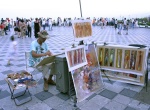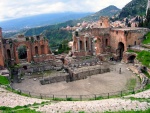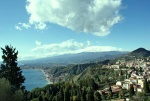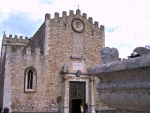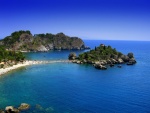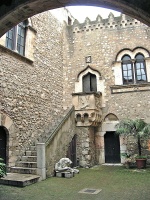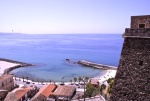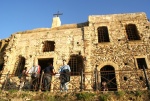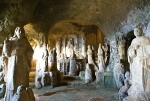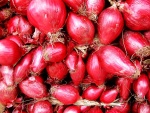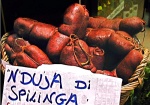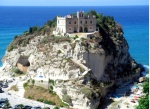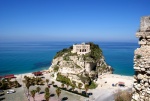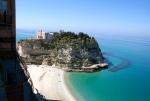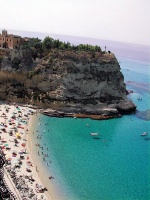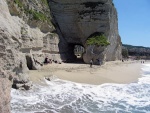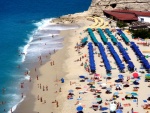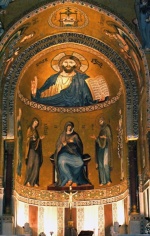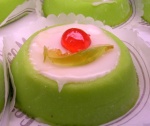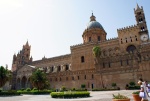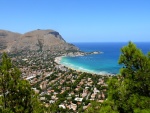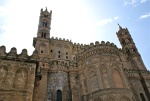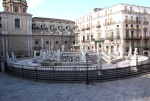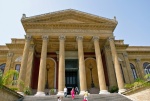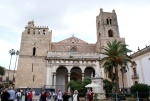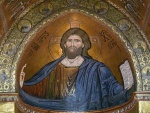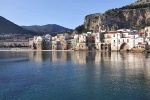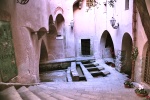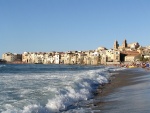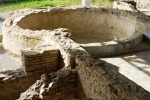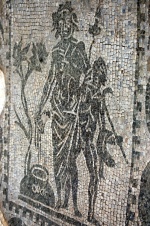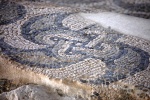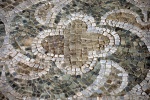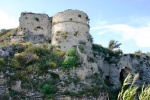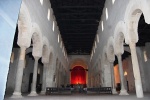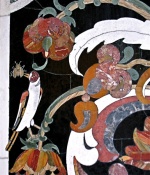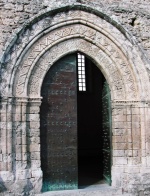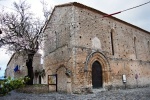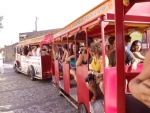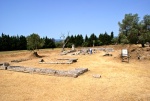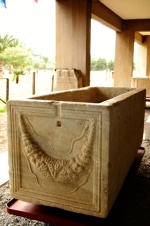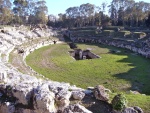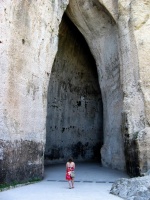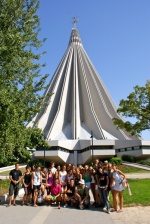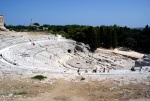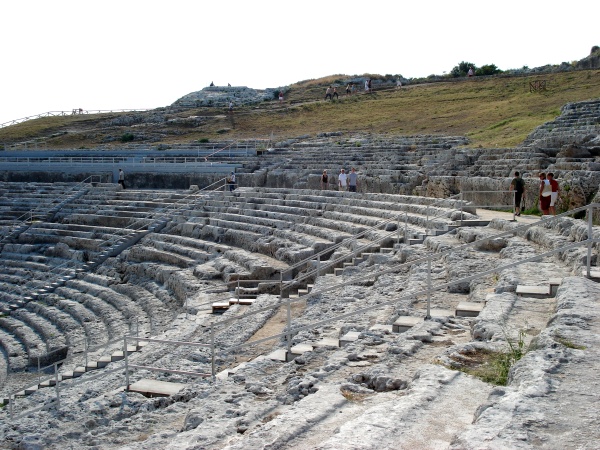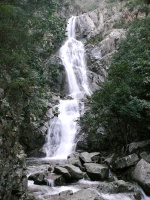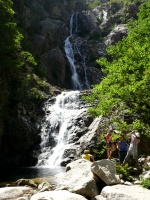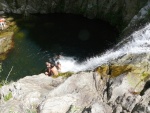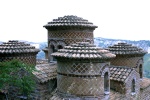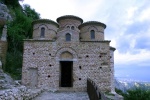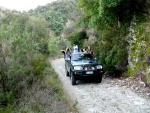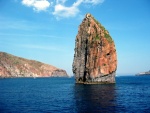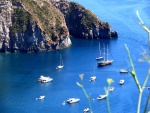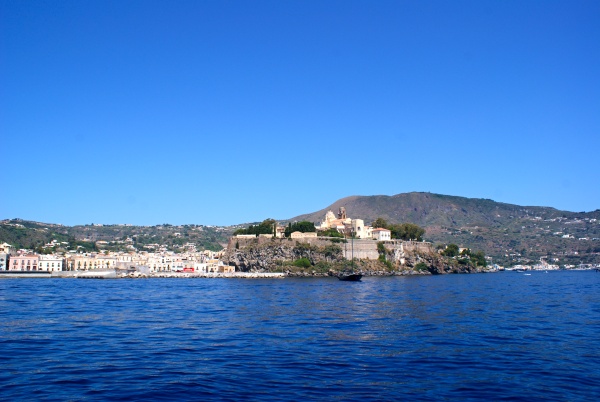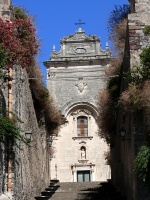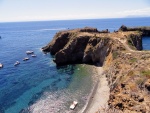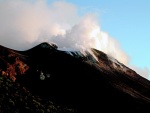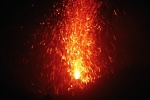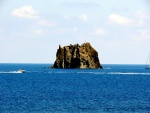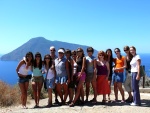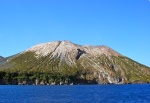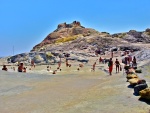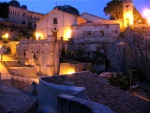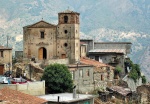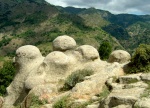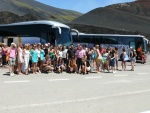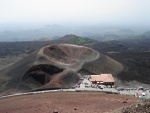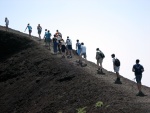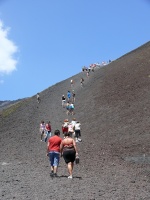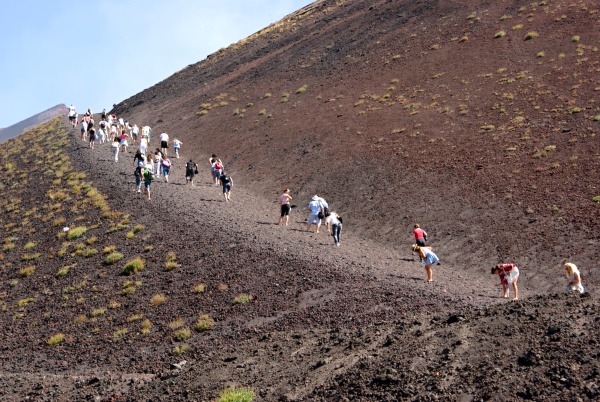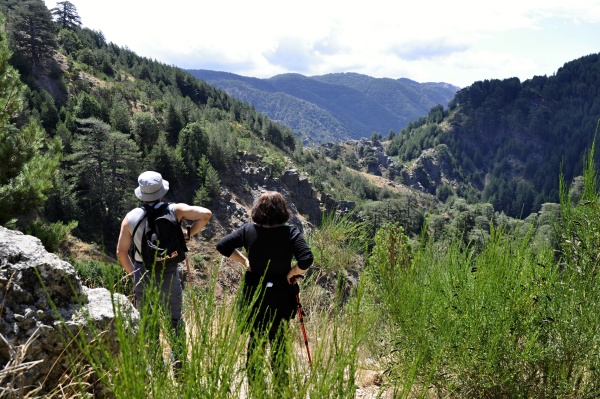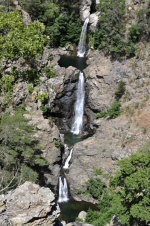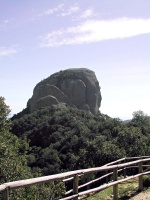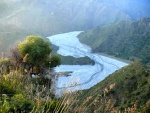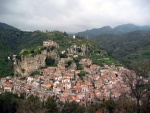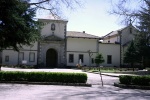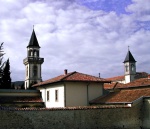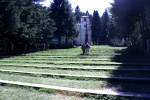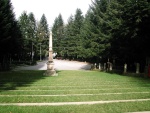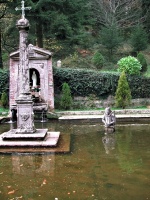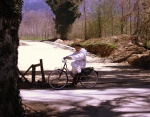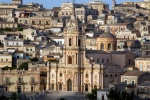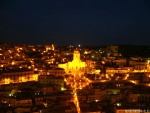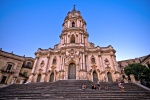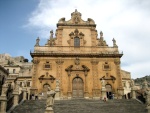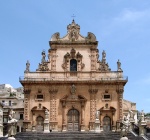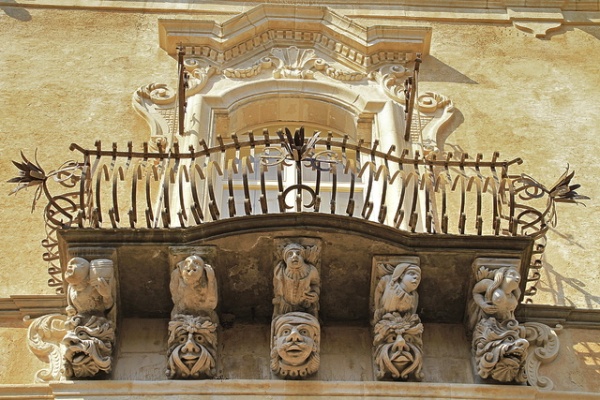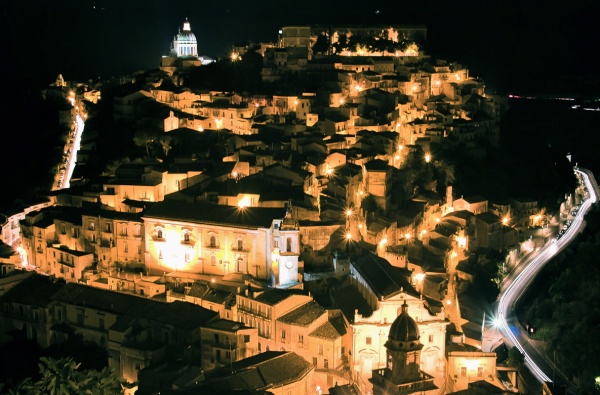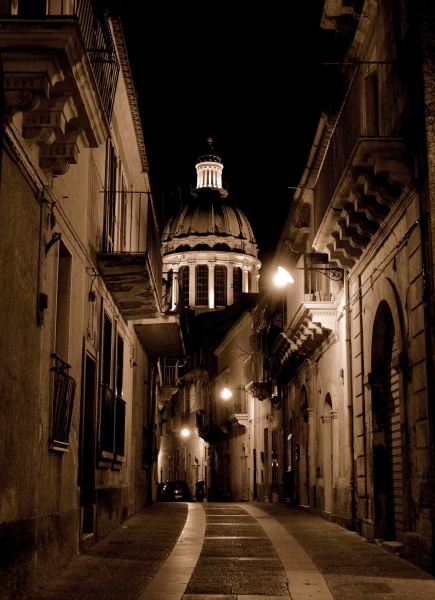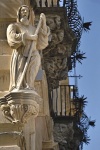- Home
- University
- Teaching
- University research and Centres
- Students
- Library
- Communication
- Transparent Administration
Educational Trips 2014
The Ce.S.A.S.S. (Study and Assistance Centre for Foreign Students ) - to make it useful and enjoyable at the same time, the stay of foreign students enrolled at the University "Dante Alighieri" of Reggio Calabria - presents the program of educational trips and cultural outings for the year 2014 in order to raise awareness of the historical, artistic and cultural heritage of Calabria and Sicily.
Some university trips are designed to support the regular educational and cultural programmes, so a value of attendance hours will be assigned. It is undisputed the importance of the educational trips involving students, considering that also it will be useful to improve their level of socialization. In fact, the harmony that is created among them on these occasions makes their stay more enjoyable and the momentary disconnection from the family less hard.
To this purpose, the Ce.S.A.S.S. displays the following programme for the year 2014:
*N.B. 1 - The programme of educational trips in 2014 will be subject to additions and / or changes , which will be notified in advance to the participants.
*N.B. 2 - For university trips in 2014 may also participate students enrolled in degree courses.
*N.B. 3 - The CeSASS may also include in the programme the following educational trips: Agrigento, on the occasion of "Almond Blossom" festival (from the end of January to the first week of February 2014 ) and Noto , on the occasion of the “Infiorata” [flower display] ( on May 2014 ).
Each month CeSASS organizes a guided city tour to make students aware of the most interesting places of Reggio Calabria city centre from a historical, cultural and artistic point of view.
Siracusa - Catania. [Course Credit : 4 hours for A1 course - 6 hours for A2 -B1 - B2 - C1 courses]
Syracuse is one of the most representative city of Greek origin in Sicily. Imposing is the “Neapolis” Archaeological Park , with the magnificent Greek Theatre and Roman Amphitheatre. Within the area of Latomies distinguishes the singular “Ear of Dionysius” , called the "cave that talks " because the sounds are naturally amplified inside. The tyrant Dionysius of Syracuse from an opening above the cave listened to his enemies, enslaved, and when they were plotting against him, they suffered terrible punishments. Not far away there is an open tomb , probably the scientist Archimedes of Syracuse , who was killed during the Roman conquest . On the significant historical and artistic importance is the island of Ortigia, the first Greek settlement in the area. Here stood the Acropolis, with at the centre of the Temple of Athena, later converted into a Catholic church, that is now the Cathedral of Syracuse. Not far from the cathedral is the church of " Saint Lucia alla Badia " , in which is displayed a painting by Caravaggio, " The Burial of Saint Lucia ."
Catania, in the course of its 27 centuries of history, has experienced periods of splendor. In Roman times it was a flourishing centre, and in this period was built the amphitheater which was second in size to the Colosseum. During the Norman, Swabian and Aragonese dominations it was a royal residence and has been for about a century capital of the Kingdom. In that historic period the city was considered an important strategic military district and Frederick II built the Castello Ursino. Alfonso of Aragon, instead, chose Catania to found the first Sicilian University of studies (among the first in Italy) in 1434, which will be a cultural reference point of the time.
Catania is also the home of musician and composer Vincenzo Bellini, author of the famous "Norma" and of the singer-songwriter Franco Battiato. The patron saint is Saint Agatha of Catania. Each year lavish celebrations that last for thirty days are dedicated to her.
Taormina - Carneval of Acireale. [Course Credit : 4 hours for A1 course - 6 hours for A2 -B1 - B2 - C1 courses]
Taormina is one of the most famous tourist destinations in Europe and worldwide. Built by the Greeks on the Mount Tauro, overlooking the beautiful bay of Naxos, the first Greek city in Sicily and then, in modern times (1860), it became Giardini-Naxos. The Greek-Roman Theatre, situated in a panoramic position, has hosted numerous celebrities of the cinema, theater and music that helped to make even more famous this village. The most important street of the old town is Corso Umberto I, which starts from Porta Messina and ends at Porta Catania. The Taormina cousine, strictly based on fresh fish, is able to delight the most refined palates.
Carnival of Acireale is one of the most important events in Sicily, among the first in Italy. Every year in this fun and original event many thousands of people participate. Everything takes place in the picturesque baroque scenery of the beautiful Acireale.
Seminara, a visit to the pottery workshops - Palmi, House of Culture "Leonidas Rèpaci". [Course Credit : 4 hours for A1 course - 6 hours for A2 -B1 - B2 - C1 courses]
Seminara is a small town nestled in the green hills between Bagnara and Palmi. Birthplace of famous people, including: the monk Barlaam, (1290), theologian, astronomer and writer, Francesco Petrarca’s teacher of Greek. He was then bishop of Gerace. Leontius Pilatus, (1313), a disciple of Barlaam was one of the first promoters of the study of the Greek language in Europe. He translated for the first time in the world, from the Greek to Latin the Iliad and the Odyssey by Giovanni Boccaccio, his loyal and attentive student. Seminara has a peculiar characteristic, it is animated by the workshops of artistic ceramics and brightly coloured pottery. You do not know the exact year of the beginning of this craft production, but already in 1777 an English traveler, Henry Swinburne spoke about it. In 1880 he recorded twenty-eight furnaces so that dozens of workers were employed.
“The House of Culture” is a cultural landmark , not only for the city of Palmi , but for the whole of Calabria . In it, in various places , are placed: the public library , full of books and works on Calabria and Southern Italy , the Museum of Ethnography and folklore , which opened in 1955. There is a large and important exhibition of traditional Calabrian objects divided into several sections devoted to the cycle of the year, the cycle of human life, the life of the farm and the seafaring, to the folk art and to that one of the shepherds, to dance, music and singing , costumes , superstition and magic , and finally to the popular religion ; Francesco Cilea the Civic Museum , which opened in 1962 , houses the music library of the great musician from Palmi. Various compositions of the master,are displayed such as portraits of Rossini, Bellini and Mozart , the Antiquarian " Nicola de Rose " with large display material from the ancient city of Taureana . The findings , which document the life of the city , ranging from the seventh century. B.C. to the eleventh A.D. Inside was staged an art gallery showing paintings by Claude Monet , the father of Impressionism, Eduard Manet, Renato Guttuso , Amedeo Modigliani, famous for his female portraits characterized by stylized faces and tapered necks , Giovanni Francesco Barbieri , called Guercino and other important artists .
Pizzo - Tropea. [Course Credit : 4 hours for A1 course - 6 hours for A2 -B1 - B2 - C1 courses]
Pizzo is situated on the middle side of the Tyrrhenian Sea, in the Gulf of St. Euphemia. In the centre of town is situated the Aragonese castle, where he was imprisoned and then executed the French king Joachim Murat, Napoleon 's brother in law . Not far from the town , almost in the sea shore , is situated the church of Piedigrotta unique because within the sacred statues were carved entirely from stone. The town of Pizzo is famous for the production of ice cream “truffle " and tuna oil.
Tropea is a town of extraordinary beauty that overlooks the Tyrrhenian Sea. The two important elements of Tropea are the beaches and the sea, among the cleanest in Italy , in addition to the old town . Suggestive are the views of Tropea on the Tyrrhenian Sea . Gaze stretches to the distant island of Stromboli. There are thousands of tourists each year crowd Tropea, attracted by the beauty of the landscape and also by the excellent hospitality . Very renowned is tbe Tropea gastronomy topped with two excellent products : the red onion and the ' nduja , the latter is produced in Spilinga not far from Tropea.
Palermo. [Course Credit : 4 hours for A1 course - 6 hours for A2 -B1 - B2 - C1 courses]
*NB. The trip to Palermo can be arranged if we reach a number of 30 participants.
Palermo is the second largest and most important city of southern Italy after Naples . The city has been and continues to be an important multi-ethnic centre . Already at the time of the Normans, Palermo was the meeting point of the Byzantines and the Arabs, the two dominant cultures from the seventh to the twelfth century. These people have left a cultural and artistic heritage of a great importance. The Palatine Chapel in the Norman Palace and the Cathedral of Monreale are tangible evidence . In Palermo, as in other cities of Sicily, is the baroque to dominate artistically. This unique type of art, in Sicily, was a remarkable glitzy development, so much so that it was called " Sicilian Baroque " , characterized precisely by a lit decorativism , especially dramatic sense and specific colour scheme. Palermo is also an expression of that particular floral artistry that is identified with the Liberty style, which is a clear expression of the Teatro Massimo.
Villa romana di Casignana (Villa Romana) - Museo Archeologico di Locri - Gerace. [Course Credit : 4 hours for A1 course - 6 hours for A2 -B1 - B2 - C1 courses]
The three goals are of great importance with regard to the knowledge of the period of Greek, Roman, Byzantine and Norman dominations. The cultural , archaeological and architectural assets into the axis Casignana - Locri are part of the Magno - Greek period and the Roman Empire.
Gerace is considered one of the most beautiful hundred villages in Italy . Called the holy city for the countless churches, is located on the hilly part of the Ionian coast about 470 meters high. The magnificent Norman cathedral dominates the city centre , full of many noble buildings . The Chapel of Our Lady of the Odigitria , the One who shows the way, formed in 1261 , in the Cathedral basement , houses the precious marble statue of the Madonna with her Child by the Sienese sculptor Tino di Camaino .
The crypt is presented with a Greek cross plan divided by twenty-six columns, from villas and temples in Locri , which support the vault of the oldest part of the cathedral, carved into the rock around the eighth century.
Of great artistic beauty of the altar inlaid inside the church of San Francesco. The nearby church of San Giovannello is a witness of the Byzantine period , it is still customary to officiate the Mass with Greek rite. At the top of the village, the mighty Norman castle surrounded by a village , served as the last refuge in case of enemy attack.
The Roman Villa of Contrada Palazzi, on the territory of Casignana , situated along the Ionian coast between Reggio and Locri , is one of the most important examples of attendance and use of the Calabria territory in Roman times .
The imposing building is characterized architecturally by several phases of construction with plenty of mosaic decorations and the presence of a large spa complex that stands out for its precious floor like the “frigidarium” room ( " hall of the Nereids " ) with a marine thiasos or like the mosaic of the four seasons . The prestigious mosaics , not all brought to light , are no less important than those of the best known Roman Villa of Piazza Armerina.
The Archaeological Museum of Locri , tells the story of Locri Epizephiri , one of the oldest and most important cities of Magna - Greece.
The archaeological remains exposed inside were recovered during the excavations carried out on the territory of Locri between the late eightieth and early ninetieth century by the famous archaeologist Paolo Orsi from Trento.
Siracusa - Noto. [Course Credit : 4 hours for A1 course - 6 hours for A2 -B1 - B2 - C1 courses]
Syracuse was one of the greatest cities of Magna Grecia . Majestic, the Neapolis Archaeological Park , with the impressive Greek Theatre (15,000 spectators ) and the Roman Amphitheatre . Within the area of Latomies stands o the unusual Ear of Dionysius , called the "cave that talks " because the sounds inside are amplified in a natural way . The cave has been transformed into a place of imprisonment, it served to the tyrant Dionysius to listen, hidden , his enemies that were plotting against him. Then the latter ones were cruelly punished. Not far away you can see the alleged tomb of the scientist Archimedes of Syracuse . Not far from the Archaeological Park is located the island of Ortigia, first Greek settlement in the Syracuse area . At the centre of the islet , the Temple of Athena, later transformed into a Catholic Church, today it is the Cathedral of Syracuse . Not far from it there is the church of " Saint Lucia alla Badia " , which houses a painting by Caravaggio, " The Burial of Saint Lucia ."
Noto is famous worldwide for its extraordinary Baroque artistry that characterizes the entire historic centre. Among the architectural heritage of great importance, there are: the Church of San Francesco, the Benedictine Monastery and the adjoining Church of St. Clare. The Cathedral with its spectacular facade, an original baroque jewel, which dominates the entrance stairway. The interior of the Cathedral was completely rebuilt after the sudden collapse in 1996 caused by the devastating earthquake six years ago. Opposite the cathedral is the Palazzo Ducetius (city council offices). Redundant for the decorative refinement, some noble palaces with concave or convex majestic facades, including: Nicolaci Palace, Astuto Palace and Trigona Palace. For beauty and uniqueness, the city of Noto was declared by UNESCO a "World Heritage".
Pizzo - Tropea. [Course Credit : 4 hours for A1 course - 6 hours for A2 -B1 - B2 - C1 courses]
Read the information on the programme displayed in the month of April.
Stilo - Bivongi. [Course Credit : 4 hours for A1 course - 6 hours for A2 -B1 - B2 - C1 courses]
Stilo, into the Ionian inland is against the wall of Mount Consolino . It was the birthplace of the philosopher Tommaso Campanella (1568) , author of "The City of the Sun" . The Basilian monks in the tenth century built the impressive " Catholic", a Byzantine - Greek temple , unearthed and restored by the great archaeologist Paolo Orsi. During the Summer, Stilo livens up and comes alive for holding this important event called " Palio Ribusa " , a historic reenactment of the Stilo renaissance aspects, with many competitions and tournaments of chivalry .
Bivongi is considered the home of good red wine from the province of Reggio. The appearance of the village is very ancient and of a medieval style. On the territory of Bivongi flows the Stilaro river , which forms the beautiful Marmarico waterfalls , the highest in the southern Apennines, with over 110 meters. The excursion by jeep and then on foot to reach them is an overwhelming adventure that excites tourists who annually visit these places.
Pizzo - Tropea. [Course Credit : 4 hours for A1 course - 6 hours for A2 -B1 - B2 - C1 courses]
Read the information on the programme displayed in the month of April.
Aeolian archipelago with an excursion to Panarea and Lipari.
Panarea of a great scenic beauty of is the smallest of the islands that form the Aeolian archipelago. It is considered the island of celebrities, because many movie and fashion stars have chosen it as the destination of summer vacation. Of a great interest is the prehistoric village discovered in “Capo Milazzese”. Not far away there is the beautiful bay "Cala Zimmari."
Lipari is the largest island in the Aeolian Archipelago. Until a few years ago there was produced the pumice stone that was quarried from the “Pelato Mount”, whose glow is visible from great distances. The historic centre is very lively and on it the "Citadel" dominates; it is a kind of fortress where rose up: the Cathedral of St. Bartholomew with an interesting Norman cloister and the Archaeological Museum rich in finds from the seabed.
Grecanic Area. [Course Credit : 4 hours for A1 course - 6 hours for A2 -B1 - B2 - C1 courses]
The Grecanic or grecophone area, also known as the Bovesìa, is a geographical area of the province of Reggio Calabria, located near the mountains of Bova. Here they speak the grecanic language, or Greek of Calabria, that is the subject of study and research and is a source of cultural exchanges and initiatives to protect the minority language. The southern Ionian side of the Aspromonte retains traces of its ancient nature, assuming the role of a real island and cultural stronghold. The difficulty of the links has done much to preserve the ancient traditions and language. Urban settlements are located largely within the confines of the Aspromonte National Park. The centres of higher part of Condofuri, Gallicianò, Roccaforte del Greco, Roghudi and Bova maintain the most obvious traces of the Magno - Greek culture.
Taormina - Etna. [Course Credit : 4 hours for A1 course - 6 hours for A2 -B1 - B2 - C1 courses]
Etna is the largest volcano in Europe, with more than 3350 meters high. During the winter it is very snowy and its slopes are well equipped for skiing. You can easily reach one of the most popular refuges ("Sapienza") to about 2000 meters. From here, a cable car leading to "Montagnola" at 2,580 meters, and then continuing by the off-road truck, you can reach one of the highest points, "The Tower of the philosopher", at an altitude of 2920. If you want to enjoy the view of the main crater, the mountain guides take tourists up to the point closest to the crater, respecting the code of conduct for security.
For the city of Taormina read about the program in February.
National Park of the Aspromonte (Amendolea Falls).
L'Aspromonte is a mountain that is part of the Southern Alps or Calabria Alps. It has a conical-pyramidal form, with a central high elevation, the Montalto, of 1956 meters. Characteristic are the "rivers", short waterways that flow only during the winter.
The park is included in the territory of thirty-eight municipalities, all in the province of Reggio Calabria. Inside the park, rich in plants and animals of various species, the rivers in many places form waterfalls making the landscape even more fascinating. For some time among the mountains of the park you can see a very rare species of bird: Bonelli's eagle, almost extinct on the Italian territory.
Siracusa - Noto. [Course Credit : 4 hours for A1 course - 6 hours for A2 -B1 - B2 - C1 courses]
* Read the information on the programme displayed on May
In the occasion of the Feast of Assumption can be made a cruise to the Aeolian Islands.
* Read the information on the programme displayed on July
Pizzo-Tropea. [Course Credit : 4 hours for A1 course - 6 hours for A2 -B1 - B2 - C1 courses]
* Read the information on the programme displayed on April
Etna - Taormina. [Course Credit : 4 hours for A1 course - 6 hours for A2 -B1 - B2 - C1 courses]
* Etna: Read the information on the programme displayed on July
* Taormina: Read the information on the programme displayed on February
Pizzo - Tropea. [Course Credit : 4 hours for A1 course - 6 hours for A2 -B1 - B2 - C1 courses]
* Read the information on the programme displayed on April.
Area Grecanica. [Course Credit : 4 hours for A1 course - 6 hours for A2 -B1 - B2 - C1 courses]
* Read the information on the programme displayed on July.
Siracusa - Catania. [Course Credit : 4 hours for A1 course - 6 hours for A2 -B1 - B2 - C1 courses]
Siracusa: Read the information on the programme displayed on August.
Catania, in the course of its 27 centuries of history, has experienced periods of splendour. In Roman times it was a flourishing centre, and in this period was built the amphitheatre which was second in size respect to the Colosseum. During the Norman, Swabian and Aragonese domination it was a royal residence and it has been for about a century the capital of the Kingdom. In that period the city was considered an important strategic military district and Frederick II built the Ursino Castle. Alfonso of Aragon, instead, chose Catania to found the first University of Study in Sicily (among the first ones in Italy) in 1434, which will be a cultural reference point in that time.
Catania is also the home of the musician and composer Vincenzo Bellini, author of the famous "Norma" and singer-songwriter Franco Battiato. The patron saint of Catania is Saint Agatha. Each year are organized lavish celebrations that last for thirty days.
Serra San Bruno (Museum of the Certosa) - Mongiana (Forestry Park of Villa Vittoria).
Villa Vittoria is the core of the Regional Park of the Serre , consisting of Biogenetic Nature Reserves managed by the State Forestry Corps , whose headquarters , in fact , is inside. The Vittoria Park , managed by the Forest Service has an area of 400 hectares used in the botanical garden, fauna path and geological trail. In recent years it has become a model of environmental education, a destination for scholars and researchers from all Italian universities. The fauna consists of Haflinger and Morgese horses, wild boar, mouflon, fallow deer, red deer, roe deer, pheasants, peacocks and a wolf. Inside the park , three botanical circuits with explanatory panels show medicinal herbs, aromatic plants and Bible plants. Also a geological trail has recently been realized.
The Certosa Museum is the core of the Regional Park of the Serre , consisting of Biogenetic Nature Reserves managed by the State Forestry Corps , whose headquarters , in fact , is inside. The Vittoria Park , managed by the Forest Service has an area of 400 hectares used in the botanical garden, fauna path and geological trail. In recent years it has become a model of environmental education, a destination for scholars and researchers from all Italian universities. The fauna consists of Haflinger and Morgese horses, wild boar, mouflon, fallow deer, red deer, roe deer, pheasants, peacocks and a wolf. Inside the park , three botanical circuits with explanatory panels show medicinal herbs, aromatic plants and Bible plants. Also a geological trail has recently been realized.
Etna - "Ottobrata" Zafferana.
*Etna: Read the information about the programme on April.
Pentedattilo - Bova (Wine Festival). [Course Credit : 4 hours for A1 course - 6 hours for A2 -B1 - B2 - C1 courses]
Pentedattilo is a picturesque village situated under the rock of the Mount Calvario with a characteristic shape reminiscent of a giant hand stretched upward, hence the name : penta- daktilos (five fingers). Unfortunately, some parts of the mountain collapsed and it no longer represents all five "fingers" , but it is still an extremely impressive and full of mystery place, one of the most characteristic towns of Calabria . The ancient village has been for some time abandoned and the population has migrated further downstream, forming a new centre from which you can admire the old " ghost town ." Every summer Pentadattilo is a permanent stop of the touring festival “Paleariza”, an important musical event of Hellenistic culture on the international scene. In addition, in August hosts the " Pentadattilo film festival ", an international event of short film that combines magically cinema and territory.
Bova is considered the capital of the Grecanic or grecophone area, also known as the Bovesia, in the province of Reggio Calabria. Here they speak grecanic , or Greek of Calabria , that is the subject of study and research and is a source of cultural exchanges and initiatives to protect the minority language . The southern Ionian side of the Aspromonte retains traces of its ancient nature , assuming the role of a real island and cultural stronghold . The difficulty of the links has done much to preserve the ancient traditions and language . Urban settlements are located largely within the confines of the Aspromonte National Park. The centres of the higher part of Condofuri, Gallicianò , the Greek stronghold , Roghudi and Bova mantain the most obvious traces of the Magno - Greek culture.
Around the Grecanic area a traditional dance called "Tarantella" is live . It is the dance of the soul. Even in more ancient times it was called the “viddanedda”, which takes its origin from some rituals linked to the culture and civilization of Magna Graecia, liberating rhythm with symbols that determine choreographical attitudes. Over the centuries, the dancing occasions have been almost always related to family holidays, to the agricultural ones, at the time of harvest or threshing, and to the religious ones. As for the symbolism of the steps, bounded the space in which the dance had to take place, a charismatic leader was chosen:“u mastru I ballu” , that with gentle gestures dictated the entrances and exits of the spectators in its space. There was also the ritual of courtship, with intersections of gazes and particular gestures. The melodic thread of viddanedda is given to the organ, an aerophone , while the rhythmical scan is guaranteed by the tambourine , consisting of a stretched membrane, animal skin, on a simple thiny-wooden frame, generally circular in shape. To enhance the sound, the tambourine is embellished with a double row of tin bells. The area of Bovesia is also an area of a major wine production. The wine was considered a sacred drink from the Greeks, the symbol of sincere friendship . We know almost all of the wine in ancient times but we cannot know the taste . It's nice to think that the taste was similar to the wine of the Bova wine cellar. The cultural content of Wine Festival is a revival of what the grecanic community did at the time of the first Greek settlements in the area. The Wine Festival in Bova , in addition to the element of aggregation is one of the most significant moments of the rural life of the community, from the pressing to the boiling of the wort. The Greek period has changed little in the way of cultivating vines and producing wine.
Villa romana di Casignana - Gerace. [Course Credit : 4 hours for A1 course - 6 hours for A2 -B1 - B2 - C1 courses]
* Read the information about the programme on May.
Modica (in occasione of the chocolate festival) - Ragusa Ibla - Noto. [Course Credit : 4 hours for A1 course - 6 hours for A2 -B1 - B2 - C1 courses]
Ragusa is divided into two: the new town and the old town ( Ibla ) . In the ancient Ibla seems that time has stopped. A feature of Dubrovnik are the "circles ", including the circle of conversation "San Giorgio" in 1911 ; the theatre " Arezzo " , a meeting place of women and the Catholic circle . Around the Ragusa, the countryside is dotted with thousands of " carobs " of some old farms, a few isolated old villas and countless stone walls of white stone, carved by young stonemason who attend "stonemason schools" . Baroque art has made this a unique city , which is now part of the UNESCO World Heritage.
Modica is located in the Val di Noto, in the province of Ragusa. Birthplace of the Nobel Prize for literature, Salvatore Quasimodo , Modica has various names : the city of a hundred churches , the City of Two Cities , low Modica and high Modica , the City of the Baroque , the City of refined chocolate . For this reason every year Modica is preparing for the " Chocobarocco " , the chocolate festival , five days and nights of party to enjoy the chocolate of Modica . Over one hundred thousand admissions in 2010, tens and several tastings for over twelve pounds of chocolate.
The writer Gesualdo Bufalino Comiso , in 1951 , taught fine arts in Modica and brought in his memory an intense trace of the city . In his memories, Modica is " the beginning of an unusual Sicily , brightened by a light of a" rare quality " never encountered elsewhere. It is a place where, among the loving labyrinths of narrow streets, wrought iron balconies dominate seeming large clothes of the ladies of other times, the corbels seem to taunt passersby with mocking or fearful sneers, the golden walls of the houses show or hide concave and convex secrets and decorated churches like the ladies in the party challenging a sky of unchanging beauty".
University
Degree Courses
Italian Language Courses
Promoters
Communication
Servizi Informatici d'Ateneo






